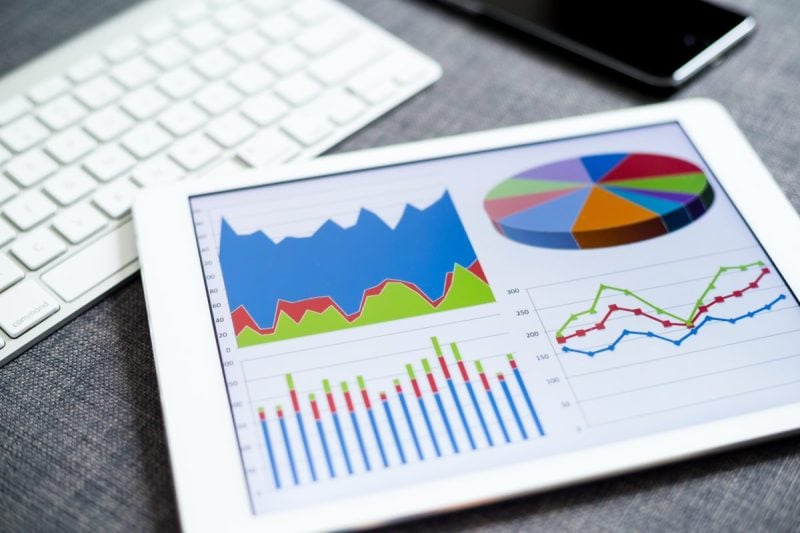Sponsored content is promotional media, usually paid for by a brand but created or published by another brand or influencer. These pieces of sponsored content are prefaced with phrases such as “presented by” or “sponsored by.” There are many reasons why a company would choose sponsored content advertising. Some examples are building credibility, increasing engagement and adding to the user experience instead of interrupting it. When done correctly, sponsored content can be mutually beneficial for all parties. These parties include the product creator, content creator, and even the audience. This article will diver deeper into sponsored content advertising and how it effects overall marketing efforts.
When considering marketing automation, there are key elements in making the strategy more efficient. Some of the best practices of marketing automation include being specific in your goals, effectively segmenting your audience, and keeping track of what is working through well-defined metrics. Many companies have utilized these elements to successfully execute marketing automation throughout their digital marketing campaigns.
Conversion Funnels
- 1 Conversion Funnels
- 2 Marketing Automation
- 3 Examples of Companies That Use Marketing Automation
- 4 Highlighting Sponsored Content
- 5 Start Using Sponsored Content Advertising Today
- 6 Frequently Asked Questions About Sponsored Content Advertising
- 6.1 1. What’s the difference between sponsored content and traditional banner ads?
- 6.2 2. How much does sponsored content advertising typically cost compared to other marketing methods?
- 6.3 3. How do I ensure my sponsored content doesn’t feel overly promotional or fake?
- 6.4 4. What role does sponsored content play in my overall conversion funnel?
- 6.5 5. How can I integrate marketing automation with my sponsored content strategy?
- 6.6 6. What are the best social media platforms for sponsored content advertising?
- 6.7 7. How do I measure the success of my sponsored content campaigns?
A conversion funnel is a metaphorical visualization of the phases customers go through as they begin an action cycle to the end. When developed correctly, conversion funnels can be a great tool and metric. They can help you understand your customers’ actions to reach the final conversion, such as closing a sale.
This tool is developed in the shaped of a funnel. That’s because as people continue to take action in the conversion cycle, they drop off. The overall number of people narrows throughout the process. These conversation tunnels can be developed to examine any part of your website for any action such as creating an account, joining an email list etc. But, they are most commonly used for converting potential customers into purchasers.
Conversion funnels demonstrate the user experience, allowing companies to get a strong sense of where they are losing potential consumers. “Widening the funnel” refers to casting a larger net to drive more people into the action funnel, done by increasing brand awareness, advertising to new audiences, or increasing social media engagement. Optimizing your conversion funnel on the other hand, focuses on keeping potential customers flowing through the funnel and decreasing drop-offs by improving drop-off points.
Examples of a Conversion Funnel
An example of a conversion funnel including content advertising could like something like this: a. Creating awareness of the brand through sponsored content on social media b. Nurture leads with targeted content such as email marketing to increase consideration c. provide product/service information as a preface d. Focus on explaining the value proposition to improve intent e. Final purchase of product/service. Sponsored content plays a valuable role in the conversion funnel at large. That’s because it can help boost product awareness and recognition. The trust and familiarity viewers feel towards a brand will help them continue into the next steps of the funnel. Ultimately, it will help get them across the conversion finish line.
Marketing Automation
The term “marketing automation” refers to using software and other technology to streamline marketing activities. Marketing automation is often used for email marketing and posting on social media. This allows for the management of marketing processes across different media channels such as email, social media, text and websites, all done automatically.
How Can Marketing Automation Help My Business?
Marketers can develop strategies to instruct these symptoms to customize and monitor these messages. Not only does this increase efficiency as it eliminates the need for monotonous tasks to be completed by hand. But it can also help save you money! Automation will free up time from repetitive tasks and reduce human error to maximize marketing budgets. According to Venture Beast, 80% of marketing automation users saw their number of leads increase, and 77% saw the number of conversions increase.
After your campaign begins, automation can continue to aid your business. By monitoring customer data, marketing automation personalizes user experiences to help them reach further into the conversion funnel, seamlessly. You can monitor these efforts to measure ROI, engagements, and additional key metrics
Not only does this automation improve efficiency, it can also help with monitoring metrics such as ROI and engagement. Strong marketing automation can scale alongside your business to aid as the company grows. More specifically, once a company gains wider recognition from sponsored content advertising, marketing automation will allow for efficient maintenance of these leads. For example, if a person searches your brand after seeing sponsored content, you can use marketing automation to send them a welcome email or include a pop-up with a coupon code. There are several different kinds of marketing automation software you can use.
Examples of Companies That Use Marketing Automation
When considering marketing automation, there are key elements in making the strategy more efficient. Some of the best practices of marketing automation include being specific in your goals, effectively segmenting your audience, and keep track of what is working and isn’t through well defined metrics. Many companies have utilized these elements to successfully execute marketing automation throughout their digital marketing campaigns.
While marketing automation may sound daunting, according to Social Media’s Today 2019 State of Marketing Automation Survey report, 75% of all companies already use at least one kind of marketing automation tool.
Mumsnet
Mumsnet is a great example of a brand utilizing this technology to increase both leads and conversions. It is a parenting website based in the UK. It provides information and advice on a wide range of parenting topics and tips. To reach their target audience even more personally, their CTO explains, “if you’re pregnant, Mumsnet will send you a regular newsletter throughout your pregnancy to help you learn about the different stages, based on how far along you are.” This process is fully automated. The company uses a custom email sign up form to schedule emails according to the due dates of expecting mothers.
Buzzfeed
Another creative example of marketing automation can be see from Buzzfeed. Buzzfeed currently offers 20 different newsletter subscriptions that range in frequency and topic. The “Tasty” newsletter includes content such as recipes, food quizzes, and cooking tips. The “Nifty” emails contain DIY projects, organization hacks, and decor ideas. These effective email marketing strategies are an innovative way to continue building brand recognition and credibility while reaching a wide audience based upon unique interests.
Highlighting Sponsored Content
While conversion funnels and marketing automation are important to overall digital marketing tactics, they can be key in highlighting sponsored content. According to PressBoard Media, readers spend an average of 36 seconds engaging with written branded content, which is significantly higher than the average 1.6 seconds they spend with a banner ad. Although this difference can be monumental, sponsored content can often come with a significantly higher cost. In order to get the most out of sponsored content, marketers must properly showcase this content in order to reach relevant audiences. A great place to start is with social media.
Social Media Sponsored Content
With millions of users on social media daily, a company’s social media content creation is often the most powerful and critical outlets a brand can have. For content creators, social media can be used to creatively display facts from product creators such as a series of memes about getting sunburned sponsored by a sunblock company. Netflix utilized popular media publications the New York Times and the Wall Street Journal. They did so by sponsoring in-depth pieces on subjects relating to their Netflix Original TV shows. Exclusive interviews or social media “takeovers” are just another way of referencing specific products, events, or experiences while taking advantage of new audiences.
Sponsored Content Advertising Tips
When beginning a campaign of sponsored content advertising, there are a few key elements to keep in mind. Many customers value genuine experiences and will often turn away after seeing overly saturated sponsorship. Similarly, the more genuine the connection between the parties involved in the sponsorship is, the more naturally the viewer will mentally align those elements together. Beginning with a hard-sell can often be off-putting. Instead, strong sponsorships and branded content feel like natural partnerships and story-telling. Use emotional intelligence and empathy to listen to the wants and needs of your audience. Also, make sure to consider their expectations while viewing your content. You will need to put your sponsored content advertising in the right place.
Most of the time with sponsored and branded content, viewers will instantly know the content was paid for. In order to maintain a result-oriented focus, think about you would like your audience to experience this content. You can add value to this by including information about your product or service, or even including a discount. Ending the experience with a call to action pushes viewers further down the conversion funnel.
Start Using Sponsored Content Advertising Today
Choosing the right format for your clearly defined goals is a great place to begin. In order to choose which type of content you are willing to create or publish, start by understanding how much growth you would like to anticipate in metrics such as page views or click-through rates. From there, it becomes easier to lay out your conversion funnel.
You can also pick which marketing efforts aid best in naturally optimizing that process. While sponsored content advertising can make a significant impact, this type of content works best as a long-term strategy. Lean into what is increasing awareness, what is growing conversions, and how you can automate to optimize the time spent in between. Sponsored content is a versatile and flexible tool. Sponsored content advertising can allow you to reach new prospective customers, begin building a credible relationship, and be a total game changer.
Frequently Asked Questions About Sponsored Content Advertising
Sponsored content significantly outperforms traditional banner ads in engagement. According to research, readers spend an average of 36 seconds engaging with written branded content compared to only 1.6 seconds with banner ads. Sponsored content is designed to add value to the user experience rather than interrupt it, feeling more like natural storytelling or partnerships. While banner ads are clearly advertisements, sponsored content integrates seamlessly with the platform’s regular content, making it less intrusive and more likely to build genuine brand awareness and credibility.
2. How much does sponsored content advertising typically cost compared to other marketing methods?
Sponsored content often comes with a significantly higher upfront cost than traditional advertising methods like banner ads or social media posts. However, the investment is justified by higher engagement rates, longer attention spans, and better conversion potential. The exact cost varies based on the platform, influencer or publication, content format, and your target audience size. While more expensive initially, sponsored content often provides better long-term ROI through increased brand credibility, deeper audience engagement, and more effective conversion funnel performance.
3. How do I ensure my sponsored content doesn’t feel overly promotional or fake?
Focus on creating genuine partnerships and natural storytelling rather than hard-selling from the start. Use emotional intelligence to understand your audience’s wants, needs, and expectations. The connection between your brand and the content creator should feel authentic – audiences can quickly detect forced or overly saturated sponsorships. Provide real value through useful information, entertainment, or exclusive insights rather than just promoting your product. Always maintain transparency by clearly labeling content as “sponsored by” or “presented by” to build trust with your audience.
4. What role does sponsored content play in my overall conversion funnel?
Sponsored content is particularly valuable at the top of your conversion funnel for creating brand awareness and recognition. It helps potential customers discover your brand through trusted third-party sources, building familiarity and trust that encourages them to move to the next funnel stages. For example, a typical sponsored content funnel might include: creating awareness through social media sponsored posts, nurturing leads with targeted follow-up content, providing detailed product information, explaining your value proposition, and finally converting to purchase. The trust established through sponsored content makes subsequent conversions more likely.
5. How can I integrate marketing automation with my sponsored content strategy?
Marketing automation enhances sponsored content by efficiently managing the leads it generates. For instance, when someone engages with your sponsored content and searches for your brand, automation can trigger welcome emails, display targeted pop-ups with discount codes, or add them to segmented email lists based on their interests. Use automation to track engagement metrics, personalize follow-up experiences, and guide prospects through your conversion funnel. This combination allows you to scale your sponsored content efforts while maintaining personalized customer experiences.
The best platform depends on your target audience and content format. Social media platforms offer millions of daily users and powerful targeting options, making them ideal for sponsored content. Consider platform demographics: Instagram and TikTok work well for visual content targeting younger audiences, LinkedIn is effective for B2B sponsored content, and Facebook offers diverse targeting options for various demographics. The key is matching your content format and target audience with the platform where they’re most active and engaged.
7. How do I measure the success of my sponsored content campaigns?
Track multiple metrics throughout your conversion funnel including engagement rates (time spent, shares, comments), click-through rates to your website, lead generation numbers, conversion rates from sponsored content traffic, and overall ROI. Use marketing automation tools to monitor customer journey progression and measure long-term brand awareness improvements. Since sponsored content works best as a long-term strategy, also track metrics like brand mention increases, organic search improvements, and customer lifetime value from sponsored content-acquired customers. Focus on both immediate performance and sustained brand building effects.







Contact Us today!